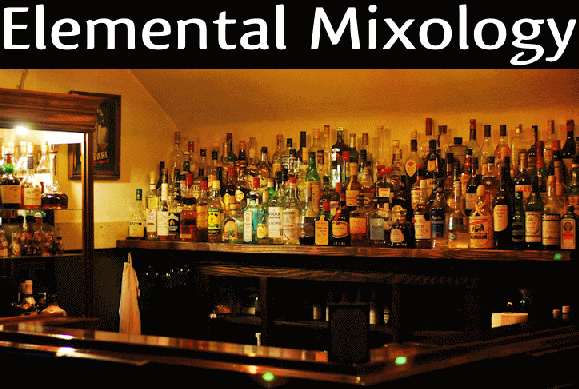I just discovered the blog of a bartender that I used to be associated with who is now mixing in the misty Northwest. He is a thoughtful mixologist more interested in substance than image. Check him out at:
http://glassplayground.wordpress.com/
Saturday, August 28, 2010
Thursday, August 19, 2010
The Marguerite Cocktail vs. the Martini Cocktail
So, there has been talk about the Marguerite Cocktail in Stuart’s Fancy Drinks from either 1896 or 1904.
I do not have access to a copy of this book, but I suspect some confusion is at work here.
As an example, the edition of Harry Johnson’s Bartender’s Manual that is being sold as a reprint of the 1882 edition is actually the 1888 edition. On the title page, one can plainly read:
Entered According to Act of Congress, in the Year 1882, by
HARRY JOHNSON,
In the Office of the Librarian of Congress, at Washington, D.C.
and then just below that:
Entered According to Act of Congress, in the Year 1888, by
HARRY JOHNSON,
In the Office of the Librarian of Congress, at Washington, D.C.
Furthermore, every image plate in the book gives the copyright below it as being from 1888. But, this has not prevented some from claiming that recipes found in this edition are from 1882. They may be, but one would have to see the original 1882 edition to know for sure, and that book is not currently available.
So, when I read that the Marguerite Cocktail is found in a section titled “New and Up-to-Date Drinks,” and that the book was reprinted in 1904, I wonder if that isn’t coming from the 1904 edition and might not be found in the original 1896 edition.
Perhaps someone having access to the book will kindly check the title page for any reference to 1904.
If the Marguerite Cocktail was not to be found in the 1896 edition, then the earliest Marguerite Cocktail recipe would seem to be that found in Tim Daly’s 1903 book, Daly’s Bartenders Encyclopedia. In it he gives the recipe as:
Marguerite Cocktail
use a mixing glass
Half fill with fine ice.
2 dashes of orange bitters.
1 dash of orange curacoa. [sic]
½ wineglass of French vermouth. [1 fl-oz.]
½ wineglass of Plymouth gin. [1 fl-oz.]
Stir well with spoon, strain into a cocktail glass, twist a piece of lemon peel on top, and serve.
The one-to-one proportion and the presence of the Curaçao liqueur would be consistent with this recipe being older than Stuart’s two-to-one version without the liqueur.
At any rate, the rediscovery of Marguerite Cocktail has been hailed as a ‘missing link’ in the evolution of the ‘Martini.’ I wonder why we should force it to be a ‘Martini’ when it has its own name and identity. For comparison, look at the 1895 Martini Cocktail in George Kappeler’s Modern American Drinks or the 1891 Martini Cocktail in William Boothby’s American Bar-tender.
I think what happened was not evolution, but rather de-evolution. It seems that once there were so many similar drinks, bartenders and customers stopped bothering with all of their names, and misappropriated the ‘Martini’ name for anything made of gin and vermouth. Then, whichever one became most common was destined to be thought of as the ‘Martini’ by the masses. This all happened after the appearance of the Marguerite Cocktail. Now, we look at old books and project that devolved point of view onto authors and bartenders that never shared it.
If you are looking for the earliest recipe calling for dry gin and dry vermouth with no bitters (explicitly), stirred through ice, strained into a cocktail glass and garnished with an olive, look to the Gibson in Boothby’s 1908 book, The World’s Drinks and How to Mix Them.
If you are looking for the earliest recipe calling for dry gin, dry vermouth, orange additive bitters with no liqueur, stirred through ice and strained into a cocktail glass, it might turn out to be Boothby’s 1908 “Dry Martini Cocktail” recipe. He garnishes it with both twisted lemon zest and a pickled green olive. Even that drink is not the regular Martini Cocktail.
Wednesday, August 18, 2010
Tumblers & Goblets
The difference between tumblers and goblets came up recently. Here is the Oxford English Dictionary on the subject:
tumbler
6.a. A drinking cup, originally having a rounded or pointed bottom, so that it could not be set down until emptied; often of silver or gold; now, a tapering cylindrical, or barrel-shaped, glass cup without a handle or foot, having a heavy flat bottom.
goblet
1.c. A glass with a foot and stem, as distinguished from a tumbler.
Marked ‘U.S.’ in the Century Dict,; but current in England in tradesmen’s price lists.
Subscribe to:
Comments (Atom)

